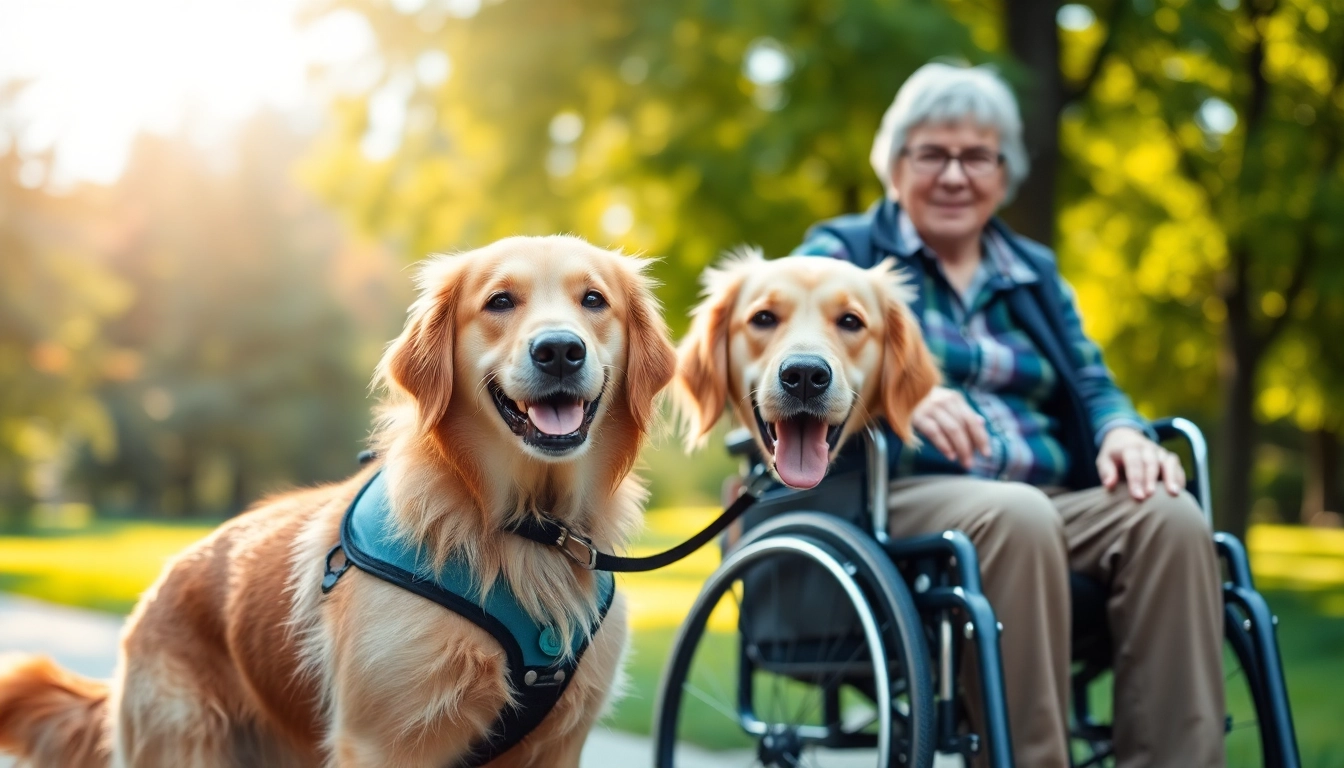Steps to Get a Service Dog: Your Comprehensive Guide
Understanding Service Dogs
What is a Service Dog?
A service dog is a specially trained canine that assists individuals with disabilities. These dogs are trained to perform specific tasks that mitigate their handler’s disability. Unlike therapy or emotional support animals, service dogs have public access rights under the Americans with Disabilities Act (ADA), enabling them to accompany their handlers in various public places.
Types of Service Dogs
There are various types of service dogs, each trained to address specific needs:
- Guide Dogs: Assist individuals with visual impairments.
- Hearing Dogs: Support people with hearing loss by alerting them to sounds.
- Mobility Assistance Dogs: Help individuals with physical disabilities navigate their environment.
- Medical Alert Dogs: Notify handlers of medical issues, such as low blood sugar or seizures.
- Psychiatric Service Dogs: Assist individuals with mental health conditions, like PTSD or severe anxiety.
Legal Rights for Service Dog Handlers
Under the ADA, individuals with disabilities who require a service dog have specific legal rights. These dogs are not considered pets, and their handlers are entitled to access public places, including restaurants, stores, and transportation. It is essential for handlers to understand these rights to ensure they are respected in public and private spaces.
Why You Might Need a Service Dog
Benefits of Having a Service Dog
The impact of a service dog on an individual’s life can be profound. Here are several key benefits:
- Enhanced Independence: Service dogs can perform tasks that allow individuals to navigate daily life more easily.
- Emotional Support: The bond between a handler and a service dog can provide emotional stability and reduce feelings of isolation.
- Increased Safety: Service dogs can help their handlers in emergencies, alerting them to dangers or assisting them in distressing situations.
- Improved Quality of Life: The companionship of a service dog can lead to increased motivation and joy in everyday activities.
Identifying Eligibility for a Service Dog
Not everyone is eligible for a service dog. Generally, an individual must have a recognized disability that significantly impairs their ability to perform daily tasks. It is important to assess personal needs and seek professional guidance to determine if a service dog would be beneficial.
Common Disabilities That Qualify
Some common disabilities that qualify individuals for service dogs include:
- Visual impairments
- Hearing impairments
- Mobility impairments
- Severe anxiety disorders
- Post-Traumatic Stress Disorder (PTSD)
- Diabetes and other medical conditions
How to Get a Service Dog
Steps to Get a Service Dog
Acquiring a service dog involves several crucial steps:
- Consult a Healthcare Professional: The first step is to obtain a diagnosis and discuss the potential benefits of a service dog with a qualified healthcare provider.
- Research Training Programs: Investigate local or national organizations that offer trained service dogs suited to your specific disability.
- Complete the Application Process: Follow the procedures outlined by your chosen organization, which may include interviews and assessments.
- Participate in Training: Once matched with a service dog, there will be a training period for both the dog and the handler.
Choosing a Training Program for Service Dogs
Finding the right training program is crucial for ensuring a successful partnership between the service dog and handler. Criteria for evaluating programs include:
- Accreditation: Look for training programs accredited by recognized organizations, which ensures a certain standard of quality.
- Reputation: Research reviews and testimonials from previous clients.
- Training Methods: Ensure the program uses humane, positive reinforcement training techniques.
- Support Services: Consider whether the program provides ongoing support and training after pairing.
Working with Healthcare Professionals
Engaging with healthcare professionals, such as therapists or physicians, can help facilitate the process of getting a service dog. They can assist in the initial diagnosis and provide documentation needed for applications, ensuring that the service dog meets the specific needs of the handler.
Costs and Funding Options
Understanding the Costs Involved
The costs associated with obtaining a service dog can vary significantly, depending on the breed, training requirements, and organization:
- Initial Cost: The price for a fully trained service dog can range from $15,000 to $50,000.
- Ongoing Expenses: Handlers should also budget for food, veterinary care, and training refreshers.
- Emergency Funds: Being prepared for unexpected veterinary bills is essential for any service dog owner.
Financial Assistance for Service Dogs
Many organizations and resources exist to help cover costs associated with getting a service dog. Some options include:
- Grants: Look for foundations and organizations that offer financial grants specifically for service dogs.
- Non-Profits: Some non-profit organizations provide service dogs at reduced costs or free to eligible individuals.
- Insurance: Consult with your health insurance provider to determine if any costs associated with purchasing a service dog are covered.
Fundraising for Your Service Dog
In some cases, individuals may decide to fundraise for the costs associated with their service dog. Popular methods include:
- Online Crowdfunding: Websites like GoFundMe can allow individuals to reach out to their community for support.
- Events: Organizing local events, such as bake sales or charity walks, can help raise funds.
- Social Media Campaigns: Utilizing social platforms to share your story can attract possible funding or donations.
Maintaining the Partnership with Your Service Dog
Training and Reinforcement
Once you have acquired your service dog, ongoing training is essential to ensure the partnership remains effective. Handle training should focus on:
- Reinforcement: Regular positive reinforcement for good behavior will strengthen the dog’s skills.
- Advanced Training: Engaging in new training activities will help the dog stay engaged and mentally stimulated.
- Problem Solving: Address any behavioral issues as they arise to prevent them from becoming habitual.
Healthcare and Wellbeing of Your Service Dog
Maintaining your service dog’s health is essential for both their wellbeing and your safety. Regular veterinary check-ups, vaccinations, and a balanced diet contribute significantly to keeping your service dog in optimal condition.
Building a Bond with Your Service Dog
Developing a strong bond with your service dog enhances both the handler’s experience and the dog’s performance. Engaging in activities together, spending quality time, and establishing routines reinforce this relationship. Mutual trust and understanding will grow, leading to a more effective partnership.
To further explore how you can help your journey, consider professional guidance, community resources, and comprehensive training options. Taking the first step to get a service dog could transform your life for the better.










